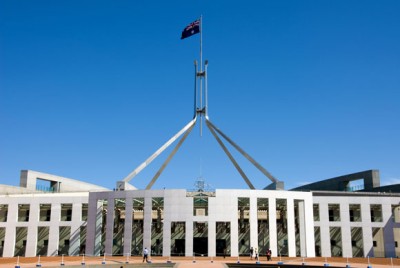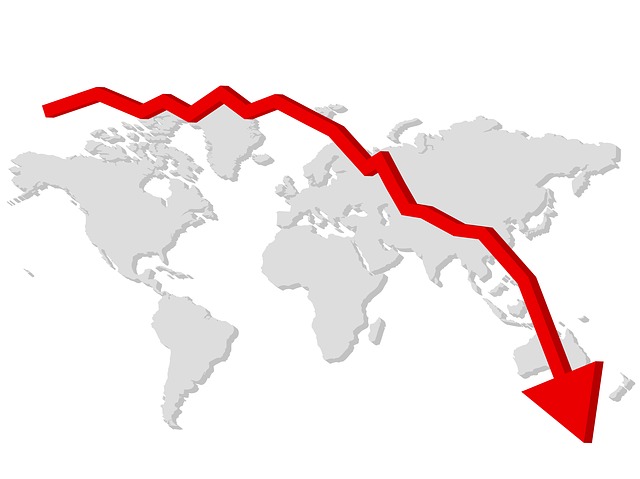
"Overall, the prevailing global economic backdrop is very investment-friendly. Arguably, in the short term the greatest danger is that these conditions promote a sense of investor complacency and a preparedness to take on more risk than would normally be considered acceptable. We caution against such a response and remain on the lookout for market sectors where investors appear overly exuberant."
Jeff Rogers, Chief Investment Officer, ipac
The September quarter saw a continuation of the synchronised growth expansion across developed economies. Markets were very quiet over the period and diversified portfolios returns were generally in line with long term trends. As a result, we did not make any major shifts in asset class allocations.
Late in the period the US Federal Reserve announced the long-anticipated commencement of 'quantitative tightening' to reduce the size of its balance sheet. The US economy no longer requires the 'emergency' stimulus measures put in place almost a decade ago in response to the Global Financial Crisis. Notwithstanding all this stimulus, inflation outcomes in the US are still below policy targets and wages growth is lacklustre even though the unemployment rate is quite low. This represents a very investment-friendly economic backdrop.
Investment market conditions remained unusually benign, with volatility in equity and interest rate markets at historically low levels despite geopolitical tensions around North Korea. Currency markets represented one of the few sources of surprise over the period with a continuation of unanticipated weakness in the US dollar, especially relative to the euro.
While there appears to have been a deliberate policy of "talking down" the dollar by US Government officials, the strength of the euro has a strong fundamental underpinning given Europe's economic growth surprise. That said, near the end of the quarter the US dollar found some support after the announcement of President Trump's tax reform agenda, which includes proposals for a growth-enhancing reduction in corporate tax rates together with measures designed to trigger repatriation of corporate cash sheltered offshore.
The Australian economy appears somewhat "out of synch" with other developed economies. Accommodative monetary policy introduced to support the economic transition after the resource investment boom lead to the surge in residential construction which is now reaching its peak. New drivers of growth are emerging for the next phase of the expansion.
There are reasons for optimism. The business sector is ratcheting up its capital expenditure plans notwithstanding weak levels of consumer confidence due in part to the anaemic pace of wages growth. At the same time infrastructure spend on road and railways can confidently be expected to rise sharply over the next few years. However, at the current time, given its heavy concentration in the financials sector, the Australian share market continues to lag its offshore counterparts because of its lack of earnings momentum.
An update on the medium term outlook for our funds
Over the past five years fund outcomes have exceeded our return expectations and market volatility is currently very low. Against this backdrop, advisers have asked for an update on our expectations for portfolio returns.
Summary
Overall, the prevailing global economic backdrop is very investment-friendly. Arguably, in the short term the greatest danger is that these conditions promote a sense of investor complacency and a preparedness to take on more risk than would normally be considered acceptable. We caution against such a response and remain on the look-out for market sectors where investors appear overly-exuberant.
Our medium term expectations for fund returns remain somewhat lower than historical averages, as market prices have already adjusted upwards in response to the improved conditions. This step down in return prospects is most noticeable for funds with a large exposure to cash and fixed income. However, given low inflation and historically low risk-free rates, we continue to believe equity markets and listed real assets are priced to deliver lower, but still satisfactory, reward-for-risk over the medium term.
The prevailing regime of low market volatility may remain in place for some time yet, but history reminds us that we should be prepared for episodes of heightened volatility. Therefore, as we look out to the medium term, we judge that the chance of a negative return over a 12-month horizon is a little higher than historical experience.
Some more detail
As you are aware, we do not claim to be able to accurately forecast the direction of markets over a three-month or a one-year horizon. Rather, we feel better equipped to address that question over a medium term horizon of three to five years.
We believe it is timely to consider the question of market outlook because we do detect a rising risk of investor complacency due to the confluence of three favourable developments. There is a natural and potentially dangerous tendency to extrapolate current conditions into the future.
1) Firstly, the economic environment is current quite benign.
2) Second, market returns over the past three to five years have generally exceeded expectations that we held at the start of the period.
3) Finally, these returns have been delivered with an unusually low level of volatility - particularly over the past year.
We would also add that ten-year trailing returns are poised for a significant improvement over the forthcoming eighteen months as weak outcomes associated with the onset of the global financial crisis drop out of the data.
The global economic backdrop is the most investment-friendly it has been for the past decade and we are experiencing the first sustained period of synchronised global growth since the Global Financial Crisis. Fears of outright deflation have dissipated, but with inflation rates remaining below trend and monetary policy remains quite accommodative.
Over the past five years the global economy has progressed to this favourable position after a series of crises, especially in Europe, and widespread anxiety around the structural impediments to a self-sustaining recovery. In the process, central banks, including the Reserve Bank of Australia, have validated an adjustment to a "lower for longer" interest rate environment. It's not surprising that investment markets have responded favourably to this improvement. As a result, market returns over the past five years have been higher than we anticipated at the start of that period.
Over the past year, not only have market returns been higher than anticipated but they have been delivered with an unusually low level of volatility. The compression in volatility appears due to the intersection of several factors. Confidence among investors that monetary authorities will act to suppress market volatility remains high. The absence of major surprises in the global economy has contributed to a reduction in top-down risk. Meanwhile a rise in importance of micro-factors driving sectors and stocks has led to a decrease in security level correlation, which lowers portfolio volatility.
Our expectations for returns over the next five years are noticeably lower than realised outcomes over the past five years. We also expect volatility to rise from their currently compressed levels. However, we still anticipate that portfolios will deliver a sizeable return premium relative to cash and the inflation rate.
We have been forecasting lower rates of return for some time now, and I am aware of suggestions we are "crying wolf", reducing return expectations simply to set up the prospect of a future favourable surprise. If only we were so clever! Our expectations are the outcome of our "unbiased" forecasting framework, which takes account of prevailing valuations and cash flow projections. We reiterate that it is important for our clients to guard against complacency after a period of good outcomes and low volatility.
Importantly, the reduction in medium term return expectations is not based on an assumption of deteriorating economic conditions or an economic recession. Rather it is an implication of the low interest rate environment and our assessment that current share prices already have a favourable outlook built in. More simply; prices have been rising faster than cash flows.
The most noticeable reduction in return expectations is for the defensive asset classes such as cash, government bonds and corporate bonds. Given current interest rates, we forecast returns averaging 3% per annum over the forthcoming five years.
For growth assets, we forecast returns averaging 8% per annum, which is a little lower than previous expectations. A good part of the reduction in expectations is associated with the high valuation multiple of the US share market. The US market has some of the best companies in the world, however their share prices already reflect that assessment. By contrast, share markets in Europe, Japan, Australia, and many emerging markets are priced to deliver returns closer to historical experience. In Australia, a large part of the return will be derived from dividends. REIT and listed infrastructure return expectations stand at around 7% per annum.
Finally, we note that with the gradual unwind of quantitative easing and growing uncertainty around central bank policy targets, investors are likely to begin to focus on the next economic downturn. This should provoke a reversion to more normal levels of volatility. But, at the same time, we would argue that this more challenging environment also represents a period in which the benefits of diversification and the incremental return from our managers come to the fore.
So we remain confident that, given low inflation and low risk-free rates, our clients will be more than adequately rewarded over the medium for the risks they bear through investment in our diversified funds.
Important note
ipac asset management limited ABN 22 003 257 225 (ipac) AFS Licence No. 234655 is the responsible entity of the diversified funds referred to in this documents (Funds) and the issuer of the units in the Funds. To invest in any of the Funds, investors will need to obtain the current Product Disclosure Statement (PDS) for the relevant Fund from AMP Capital Investors Limited (ABN 59 001 777 591, AFSL 232 497) (AMP Capital). The PDS contains important information about investing in each Fund and it is important that investors read the PDS before making a decision about whether to acquire, or continue to hold or dispose of units in the Funds. Neither AMP Capital, AMPCFM nor any other company in the AMP Group guarantees the repayment of capital or the performance of any product or any particular rate of return referred to in this document. Past performance is not a reliable indicator of future performance. While every care has been taken in the preparation of this document, AMP Capital makes no representation or warranty as to the accuracy or completeness of any statement in it including without limitation, any forecasts. This document has been prepared for the purpose of providing general information, without taking account of any particular investor's objectives, financial situation or needs. Investors should, before making any investment decisions, consider the appropriateness of the information in this document, and seek professional advice, having regard to their objectives, financial situation and needs.
Level 5, 50 Bridge Street, Sydney 2000, Australia. Sydney Office Locked Bag No. 15 Grosvenor Place NSW 1220. Telephone +612 9373 7000. Facsimile +612 9373 7111.























































